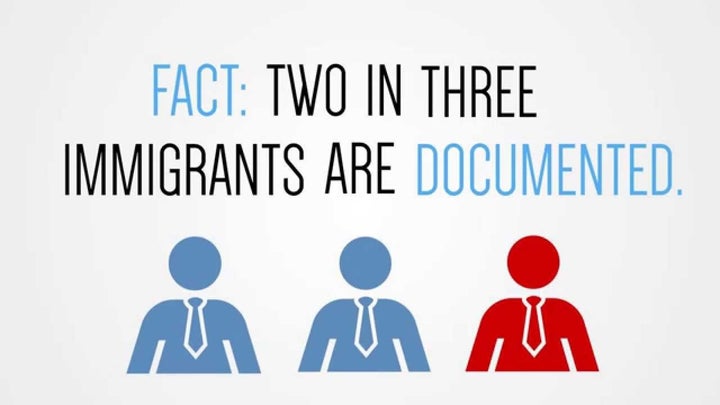
A supporter holds up a sign in support of Republican presidential nominee Donald Trump
“Donald Trump’s election campaign uncovered closet racism and xenophobia, to the extent of vehemently moving masses with a hate speech of resentment that was strategically used to win the presidency of the United States. Unquestionably not everything preached by Donald Trump was particularly felt and/or believed possible even by him. Nevertheless, he continued to evangelize along xenophobic paths, reaping in sympathy the racist and misogynistic prejudices that are still extremely latent today, culminating in the harvest of votes in his favor. Donald Trump and his advisers probably knew better than anyone . . . our now evident non-existing post-racial reality . . . which was obviously used to their advantage.”
Based on the lack of cognition that Donald Trump boarded in his hate elocutions during the recent electoral campaign, it is crucial to divulge the myths that are seen as problematic, focally regarding race and diversity. Revealing and exposing how racism is a significant and crucial factor embodied in the political rhetoric; recently persuading nearly half of the voters in the 2016 election to lustfully and blindly, or strategically and conveniently vote for the deceptive hate speech of the now elected 45th President of the United States; the tycoon Donald Trump.
In general, this article unfolds 10 myths that address law and crime, economy, racial demographics, and the social impacts of immigrants in the United States, which are anchored to white supremacy and are a detrimental factor affecting the most vulnerable.
10 Immigration Myths of Hate, Racism, Discrimination and Xenophobia:
1. We live in a post racial society
False. Donald Trump’s election campaign uncovered closet racism and xenophobia, to the extent of vehemently moving masses with a hate speech of resentment that was strategically used to win the presidency of the United States. Unquestionably not everything preached by Donald Trump was particularly felt and/or believed possible even by him. Nevertheless, he continued to evangelize along xenophobic paths, reaping in sympathy the racist and misogynistic prejudices that are still extremely latent today, culminating in the harvest of votes in his favor. Donald Trump and his advisers probably knew better than anyone . . . our now evident non-existing post-racial reality . . . which was obviously used to their advantage. Centuries of de facto segregation and prejudiced juris have particularly led white Americans to believe that any presence of people of color leads to contamination of their vitality. An explicit example of the whites’ attempts to segregate Latinos was during the Jim Crow era, attempts and effects which are still experienced today, as witnessed during the 2015-2016 presidential election, exposing how Latinos continue to suffer significant levels of segregation, discrimination, and hatred.
2. Most immigrants are in the United States illegally
False. According to the PEW Research Center, more than 30 million of the 40 million total immigrant are authorized to be in the United States. However, statistical data rarely triumphs over the ideological foundations of white supremacy. Centrally, this myth is based on decades of negative rhetoric about immigration, and discourses of fear and anxiety, based on an alleged immigrant invasion. The misguided fears of an alleged invasion are largely due to fear of loss of resources, power, control, and white dominance.
3. Most immigrants come from Latin America
False. According to recent reports, the modern wave of Asian immigration in the U.S. pushed a total of 18.2 million in 2011, constituting 5.8 percent of the total U.S. population (that is) Asian origin, compared with the less than 1 percent they represented in 1965. By 2065, it is expected that Latinos will constitute 31 percent of all immigrants. Asians in the other hand, will constitute 38 percent of all immigrants in the U.S., surpassing any other ethnic group.
4. Immigration from Latin America has increased
False. According to a report by the PEW Research Center, Latino immigration decreased almost 30 percent from 2000 to 2010. Today, we have a zero net Mexican migration rate, while Asian immigration increased by almost 20 percent. But why does the myth continues being that most immigrants come from Latin America? Considering how Asians and Latinos are racialized, it is clear that positive assumptions of Asians, seen as role-models, and Latinos as criminals shapes the process and yields opposite perceptions in the racialization of immigrants, subsequently resulting in significant variation and outcomes.
5. Immigrants are criminals
False. Specifically, it is Asian-Americans who are viewed as highly educated in diverse areas, in contrast to how other immigrants are categorized. Hence, negatively racializing, by de facto, all other immigrant groups and particularly finger pointing to Mexicans as criminals, drug traffickers, and narco-terrorist. Not to say that Asian immigrants are perceived and treated as “equal” to whites, but the process of racialization is different for the different racial groups; however detrimental it might be to America’s multiethnic, multiracial, and multicultural society.
Additionally, the myth of an accumulation of “undocumented” immigrants crossing the border “illegally” supports the idea of an American invasion and an attack to the white population. In many ways, this myth provides the basis and support for other negative criminal myths mostly impacting Latino immigrants. For further information and figures, consult a study by sociologist and criminologist Martin Guevara Urbina, which found that among young men, incarceration rates are lowest among immigrants. This holds true regardless of ethnicity or educational attainment, including Mexicans, Salvadorans, and Guatemalans who comprise the majority of the undocumented population. In 2000, the incarceration rate for young immigrant men was only 0.7 percent—five times lower than the 3.5 percent incarceration rate among young native-born men.
6. Immigrants affect the U.S. economy negatively
False. Several scholars have researched and documented how immigrant labor rarely harms the U.S. economy. In the case of the Bracero Program, as one example, immigration contributed a strong labor force to a considerably impoverished United States. Nowadays, the immigrant labor force is fulfilling the same task. As the Baby Boomers are retiring from the labor markets and withdrawing social security, a new population of workers must fill this void. Latino immigrants once again come to the rescue of the United States, as they did during World War II with the Bracero Program, but they are erroneously conceptualized as the main drain of the United States welfare state, even though the grand majority of people draining state and federal welfare programs are white Americans.
Furthermore, Census data along with the Partnership for a New American Economy estimate that immigrant-owned businesses generate more than $775 billion in revenue, $125 billion in payroll, and $100 billion in income, employing one out of every 10 workers along the way. In fact, “immigrants started 28 percent of all new U.S. businesses in 2011.” Evidently, while myths and reality clearly clash, Latino immigrants have become the scapegoat of the United States.
7. They take our jobs
False. Like the other myths in this article, the myth of immigrant labor theft and economic drains largely support the narrative of white supremacy. Moreover, this myth is designed to mask and avoid blaming the proportion of whites who take advantage of social services in relation to people of color, and defocusing attention to the devastation caused in the United States economy by mostly white men who perpetrate in malicious business, tax evasion and/or crook bank practices.
However, Latino immigrants provide a significant labor service to the U.S., as they account for a significant portion of the heavy labor force, and as the white population ages Latino immigrants fill the various voided sectors of the labor force, significantly contributing to the U.S. economy.
Contrary to popular belief, immigrants in the United States join native-born Americans in improving the American economy. According to the Kauffman Index of Entrepreneurial Activity, immigrants were more than twice more likely to start businesses in 2010 than were the native-born.
8. Immigrants and Latinos drain social and welfare services
False. This myth blames immigrants for multiple problems in the U.S. However, it is necessary to remember that the United States has historically provided welfare programs that have benefited whites only.
In fact, undocumented immigrants are not eligible for federal public benefits such as Social Security, Supplemental Security Income, Temporary Assistance for Needy Families, Medicaid, Medicare, and/or food stamps. Even most legal immigrants cannot receive these benefits until they have been in the United States for five years or longer, regardless of how much they have worked or paid in taxes in the United States. Further, today 90 percent of the beneficiaries are not Latino, the list of people receiving social assistance in the United States is led by whites. In general, this myth undermines the reality that it is mainstream white men, not immigrants, who created and contributed to the many problems in the U.S. economy. In contrast, immigrants provide a significant boost to the U.S. economy.
9. Immigrants do not pay taxes
False. Immigrants provide an important labor service, as they represent a significant portion of the workforce, solving the problematic of the declining white birthrate and the increasingly aging population. As white populations grow older, immigrants substitute their positions. Additionally, immigrants contribute to the economy by paying payroll taxes, local taxes and state taxes; accounting for 11.6 billion dollar annual tax collection from undocumented immigrants alone. Otherwise, the economy would stumble without the labor momentum and economic contribution of immigrants.
10. Previous immigrants (white Europeans) arrived to the U.S. legally and should be understood as a model for all immigrants
False. Typically, the “beneficiaries” of America's main institutions invoke the myth that the “former immigrants” are “the one group of white Europeans” who allegedly discovered America and made America great. Evidently, the diverse groups of Europeans who arrived at that time are the ancestors of “Americans” today, the so-called “real Americans,” but a crucial point not commonly mentioned in relation to this myth is that all those groups of initial immigrants of multiple nationalities were mainly all classified as white at the time. Being that if they were sufficiently white phenotypically, they automatically acceded to the citizenship, and if not so, citizenship was granted scarcely after arriving in the United States. It should also be mentioned that the laws that governed the access of these groups were significantly different from the laws currently governing access to U.S. citizenship today.
Access to citizenship today requires many hours dedicated to dealing with bureaucracies, years of permanent residence, criminal background checks, resources, and great deal of complex paperwork. Citizenship based on historical precedent was significantly easier for European white immigrants, and if one was in the first wave of European invaders in 1492, all that was needed was a pistol.

TWO IN THREE IMMIGRANTS ARE DOCUMENTED.
In conclusion, there are many myths circulating immigrants in the United States. These myths are way numerous to fully capture in this article. The myths briefly discussed above are the most common and important to reflect upon, as they underline how immigration and racial issues are conceptualized by many citizens of the United States. In all, this article briefly highlights how immigration related myths are use to provoke passions of hatred, racism, discrimination, and xenophobia, seeking to maintain white supremacy and holding the dissimulate myth of the virtue and sublimity of the white citizen.
Most importantly is the divulgement of these myths, exposing these historical and contemporary fables, which are mostly pure xenophobic chimera and do not rebound veracity, equality, justice, respect, and human dignity.
Globally, situating these myths within a broader context, it should be understood that racism is deeply rooted in the American legal system, with a primary objective: the maintenance of white supremacy. Therefore, the systemic and structural factors that shape race in the United States and its legal system have led to the disproportionate imprisonment of many people of color and immigrants. Racial erudition about social interaction between people of color and whites clearly demonstrates that the distribution of social power is consistently asymmetric and favors whites.
Sofía Espinoza Álvarez is an author, researcher, legist, and advocate. She is a law graduate and holds a Bachelor of Science degree in criminal justice. Álvarez has maintained an active professional career and an intense research and publication agenda, publishing various academic book chapters, journal articles, and books. Her books include, Immigration and the Law: Race, Citizenship, and Social Control Over Time (forthcoming); Ethnicity and Criminal Justice in the Era of Mass Incarceration: A Critical Reader on the Latino Experience (2017); and Latino Police Officers in the United States: An Examination of Emerging Trends and Issues (2015).
